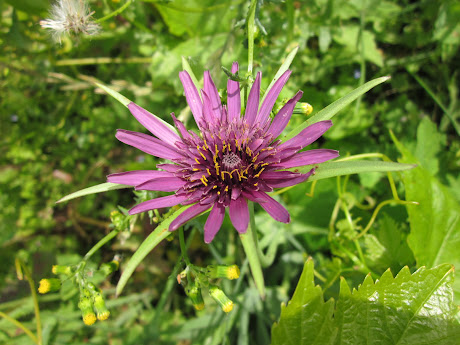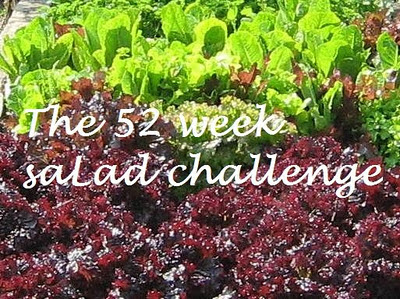Contemporary Colour in the Garden: Book Review
I've quite a few books left in the booklog for this year, so I expect to be writing quite a few reviews over the next few weeks as I make my way through them all.
 First up is Andrew Wilson's Contemporary Colour in the Garden. This lavishly illustrated volume looks at how colour can be used today. There's plenty of inspiration drawn from top designers like Piet Oudolf and Christopher Bradley-Hole; many examples chosen from Chelsea show gardens and other shows such as Chaumont; plus lots of real gardens, both private and those open to the public.
First up is Andrew Wilson's Contemporary Colour in the Garden. This lavishly illustrated volume looks at how colour can be used today. There's plenty of inspiration drawn from top designers like Piet Oudolf and Christopher Bradley-Hole; many examples chosen from Chelsea show gardens and other shows such as Chaumont; plus lots of real gardens, both private and those open to the public.
Unfortunately I found the text quite hard going, partly due to the mainly three column layout and also because it's pitched more at the student and professional garden designer level rather than ordinary gardeners like me. However, I did find it very useful to treat each of the pictures as a case study and ask myself whether I thought the plant and/or colour combinations worked or not. From that alone, I now have a notebook of ideas ready to try out in my garden in future years.
Disclosure: I received a review copy from Timber Press, the publisher.
 First up is Andrew Wilson's Contemporary Colour in the Garden. This lavishly illustrated volume looks at how colour can be used today. There's plenty of inspiration drawn from top designers like Piet Oudolf and Christopher Bradley-Hole; many examples chosen from Chelsea show gardens and other shows such as Chaumont; plus lots of real gardens, both private and those open to the public.
First up is Andrew Wilson's Contemporary Colour in the Garden. This lavishly illustrated volume looks at how colour can be used today. There's plenty of inspiration drawn from top designers like Piet Oudolf and Christopher Bradley-Hole; many examples chosen from Chelsea show gardens and other shows such as Chaumont; plus lots of real gardens, both private and those open to the public.
I read a number of books and articles before writing about Colour Theory in Garden Design earlier this year, so I found the first few chapters didn't say much that was new to me. However, that doesn't mean they should be omitted as they give a thorough introduction to the subject. The later chapters on The Restricted Palette, Breaking Colour Rules (especially) and Inspired by Nature spoke to me much more. Andrew also has lots of useful things to say about combining hard and soft landscaping and it's good to see both taking centre stage in one volume.
Unfortunately I found the text quite hard going, partly due to the mainly three column layout and also because it's pitched more at the student and professional garden designer level rather than ordinary gardeners like me. However, I did find it very useful to treat each of the pictures as a case study and ask myself whether I thought the plant and/or colour combinations worked or not. From that alone, I now have a notebook of ideas ready to try out in my garden in future years.
This is a useful addition to the books on colour I have already, but newcomers to this subject might like to try Andrew Lawson's The Gardener's Book of Colour first.
Disclosure: I received a review copy from Timber Press, the publisher.










Saw this in the bookshop so thanks for the review. Timber Press publish some great books - if big.
ReplyDeleteIt makes sense that, in a book about colour, the pictures are the most informative element.
ReplyDeleteShame about the text - but if the writing were great and the pictures rubbish . . . that would be dire.
Hermes - Timber Books are fab and I thought that before I was sent review copies. They're the most frequent publisher on my bookshelf :)
ReplyDeleteEsther - good point. The photo captions are very good, so there's plenty of information accompanying each one.
I like gardens with restricted palate - its one of the first things you lear as a painter - less is more.
ReplyDeleteMark - I thought the schemes shown in The Restricted Palette chapter much more restful on the eye and calming.
ReplyDeleteI must look out for this in my local bookshop (or, perhaps, library). For me, it would be important to see the text and pictures to find out how useful it would be, e.g. are the planting combinations all named; how easy it is to get hold of the plants if you want to copy the idea, and how are the ideas scaled between large and smaller gardens? Perhaps a good book for inspiration but it would need to earn its place on my bookshelf! Thanks for this review, it's made me look again at this topic.
ReplyDeleteI'm like Caro, I'd really like to see a copy in a shop or the library before thinking about buying it, but I am wondering about 'The Gardener's Book of Colour'. I really like your book reviews, so I am glad we are in for more!
ReplyDeleteCaro - I've just checked on Amazon and sadly it's not showing the Look Inside feature for this book. The answer to you question is that it depends on the point Andrew is illustrating. Where he is discussing the role of hardscaping, then plant IDs tend to be secondary, though some in some illustrations they're named as well. Elsewhere, plants are mostly named, but not always down to cultivar. So on the whole there's plenty of information for you to explore the ideas further. Most of the ideas are shown fairly close up - either because they're from a show garden (and so relatively small in area) or as part of a larger garden. Therefore the ideas can be used straight away in most smaller and urban gardens. Owners of vast country gardens may struggle a bit, though there are some examples for them as well.
ReplyDeleteJanet - so glad yo enjoy the reviews. The next one will be two for the price of one ;)